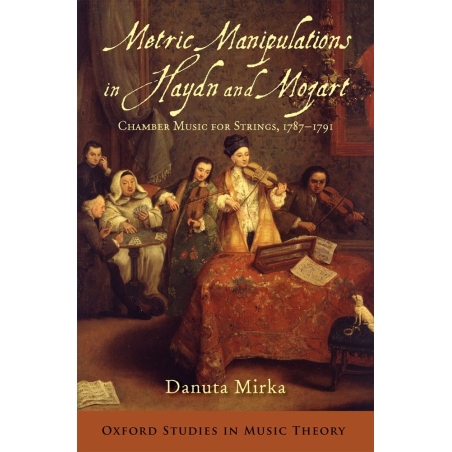Combining historical music theory with the cognitive study of music, Playing with Meter traces metric manipulations and strategies in Haydn and Mozart's string chamber music from 1787 to 1791. Her analysis shed new light on this repertoire and redefine the role of meter and rhythm in Classical music.
CONTENTS
Chapter 1. Musical Meter between Composition and Perception
1.1. The Concept of Meter in the Late Eighteenth Century
1.2. Revival of the Hierarchical Concept of Meter in the Twentieth Century
1.3. Toward a Dynamic Model of Meter
1.4. Borrowing from a Different Model
Chapter 2. Finding Meter
2.1. Statistical Parameters
2.1.1. Stress (Dynamic Accent)
2.1.2. Length (Agogic or Durational Accent)
2.1.3. Pitch (Melodic Accent)
2.2. Harmony
2.2.1. Harmonic Change
2.2.2. Harmonic Stability
2.3. Streaming and the Role of Bass
2.4. Cadence (Structural Accent)
Chapter 3. Sustaining Meter-Challenging Meter
3.1. Metrum and Regularity of Beats
3.2. Missing Beats
3.3. General Pauses
3.4. Fermatas
3.5. Syncopations
Chapter 4. Changing Meter I: Change of Period
4.1. Imbroglio
4.2. Submetrical Dissonance
4.3. Hemiola
Chapter 5. Changing Meter II: Change of Phase
5.1. Chains of Rhythmical Dissonances
5.2. Other Parameters in Displacement Dissonances
5.3. Imitation
5.4. Ligaturae, Retardation, Anticipation
5.5. Syncopated Accompaniment
5.6. Remark on Subliminal Dissonances
Chapter 6. Changing Meter III: Change of Tactus
6.1. Changes of Taktteile in Compound Meters
6.2. Changes of Taktteile in Double Measures
6.3. Perceptual Factors
6.4. Taktteile and the Tactus
Chapter 7. Analyses of Long-Range Metrical Strategies
Haydn, String Quartet in C major, Op. 50 No. 2, First Movement
Haydn, String Quartet in F minor, Op. 55 No. 2, Finale
Chapter 8. Wit, Comedy and Metric Manipulations in Haydn and Mozart's Personal Styles
8.1. Haydn
8.2. Mozart
8.3. Haydn's Earlier and Later String Quartets
8.4. Inconclusive Conclusion
Notes
References
Index
| Series | Oxford Studies in Music Theory |
|---|


